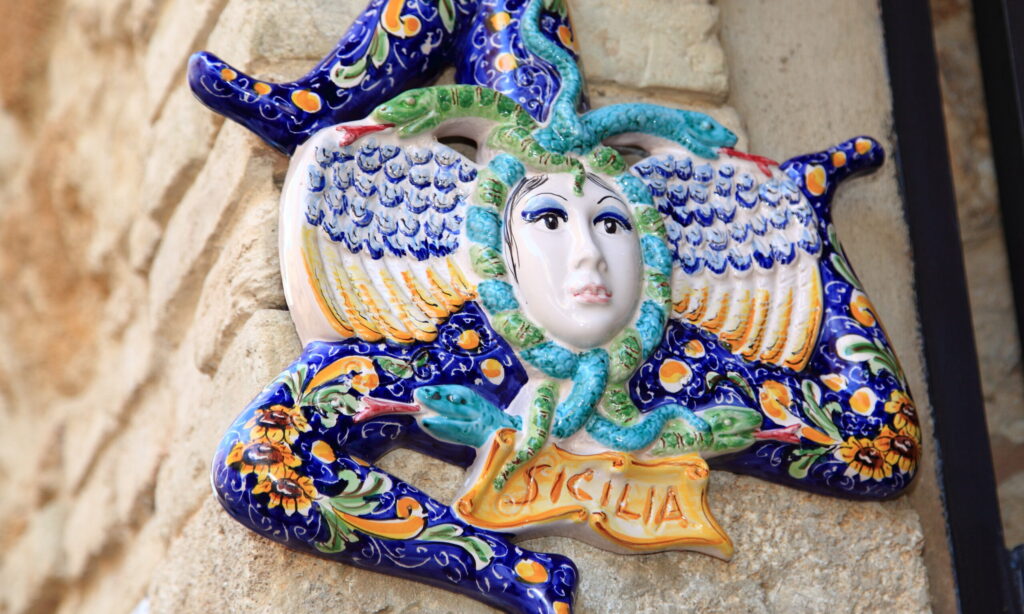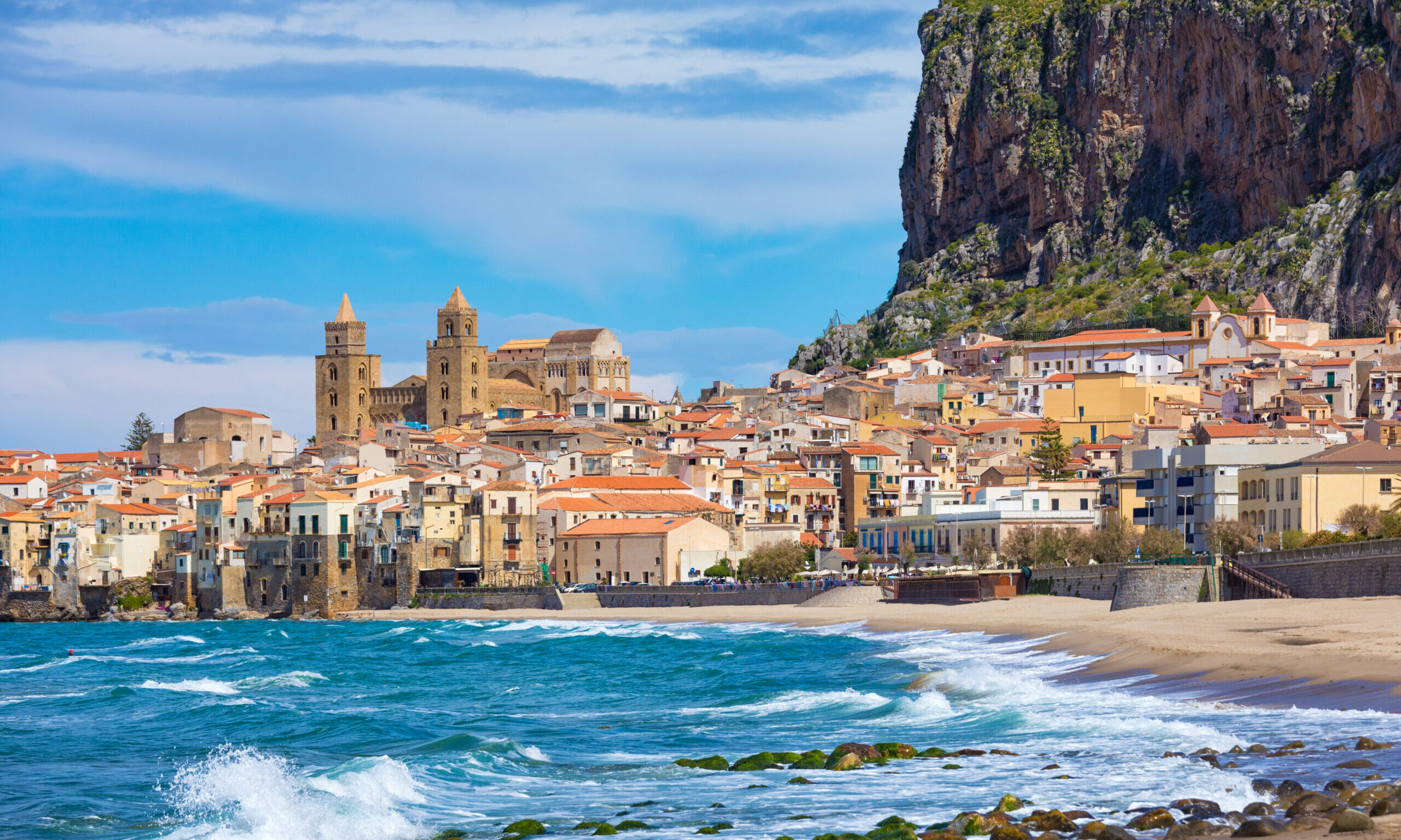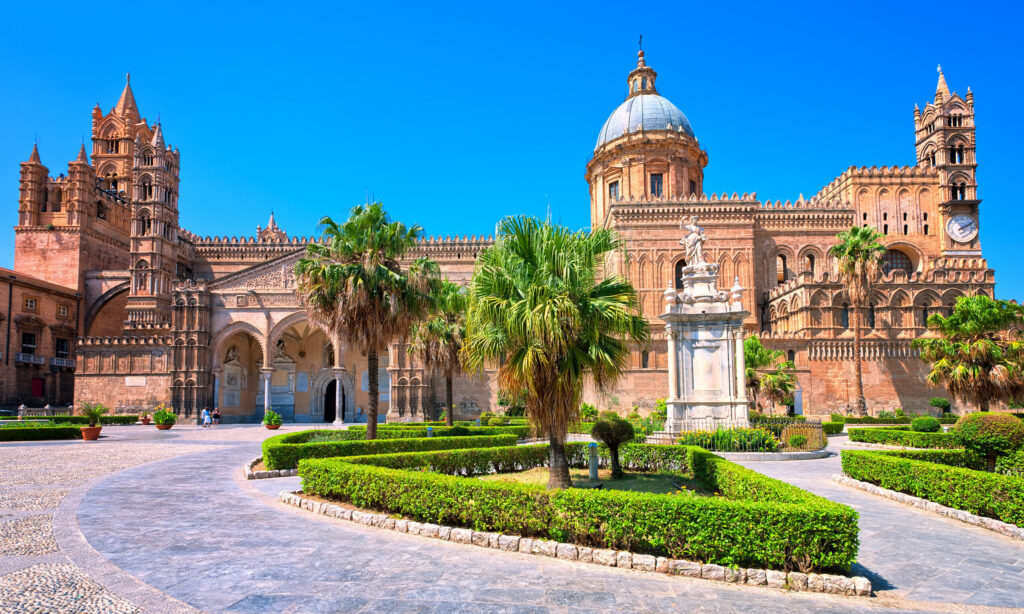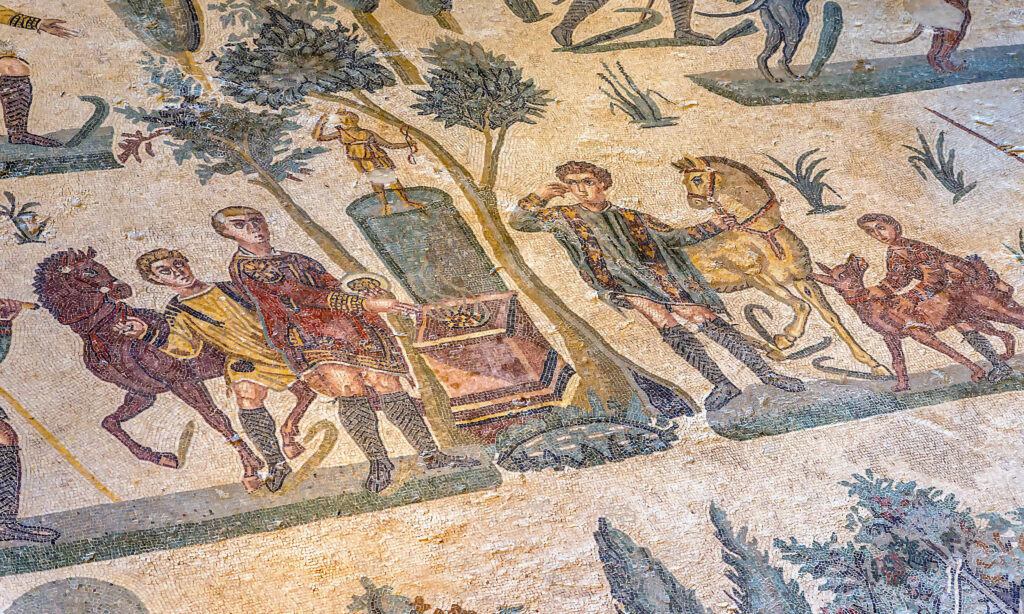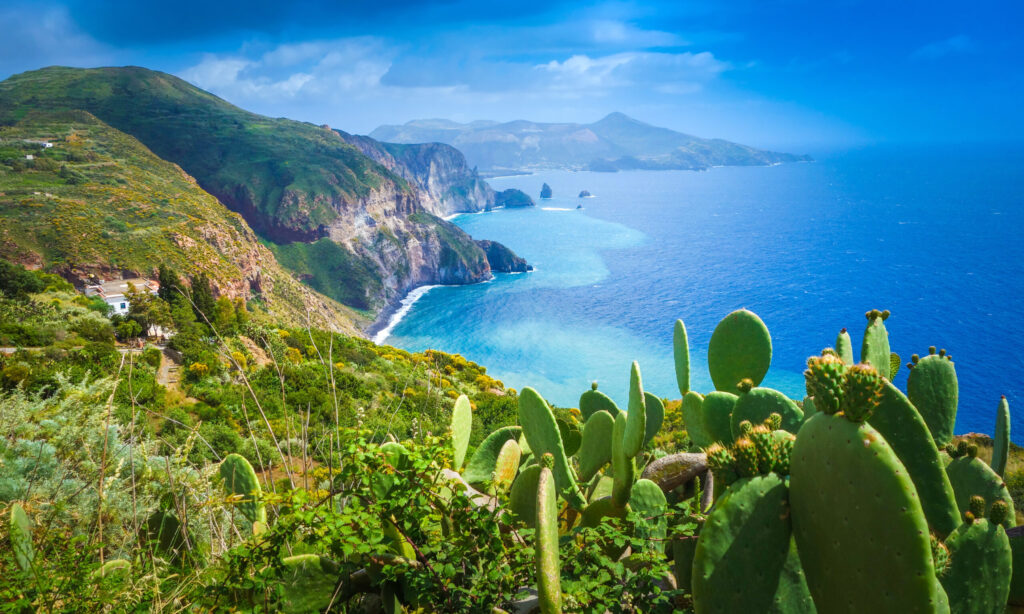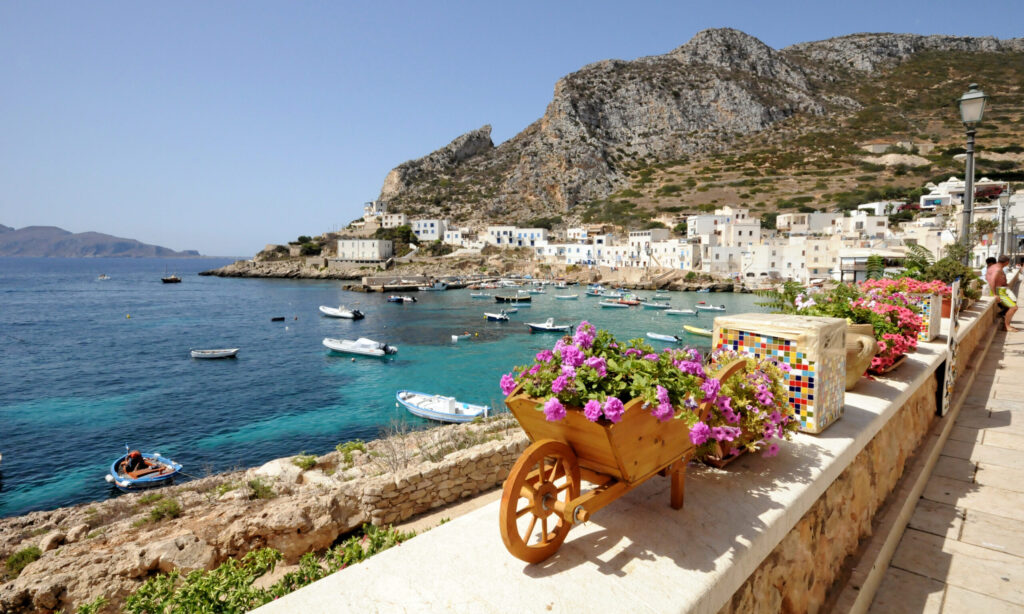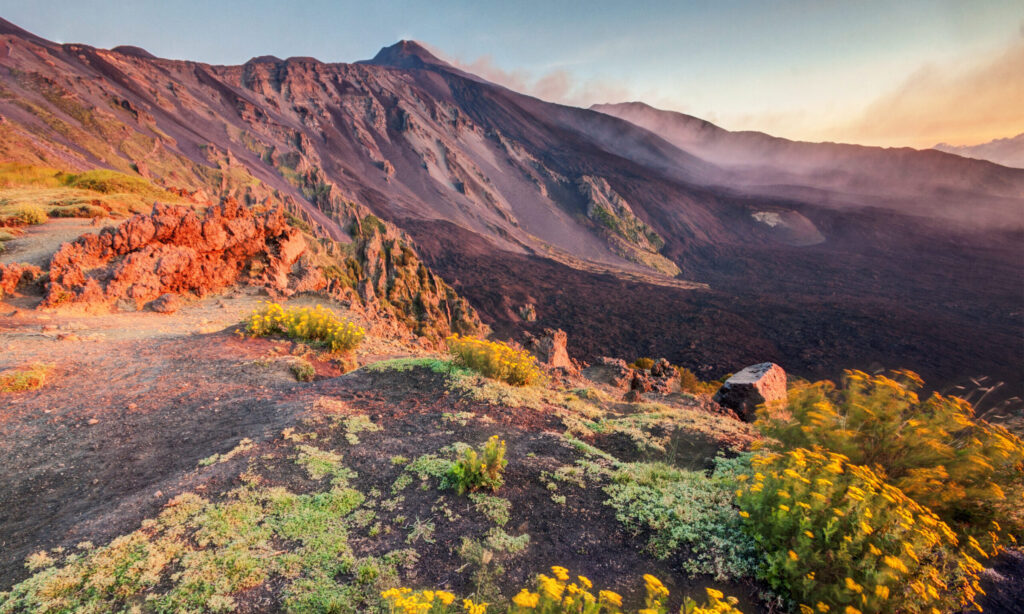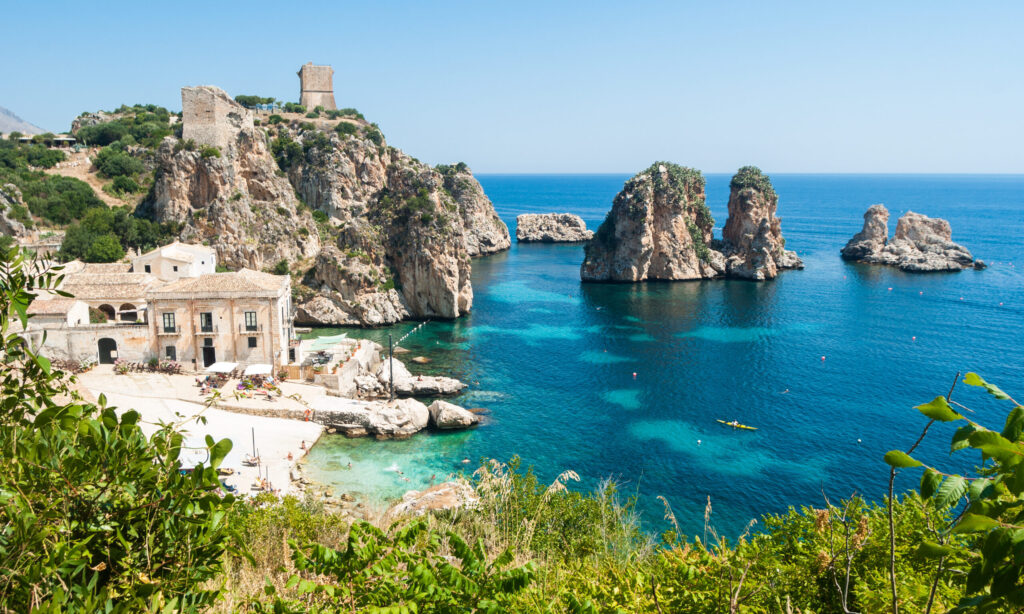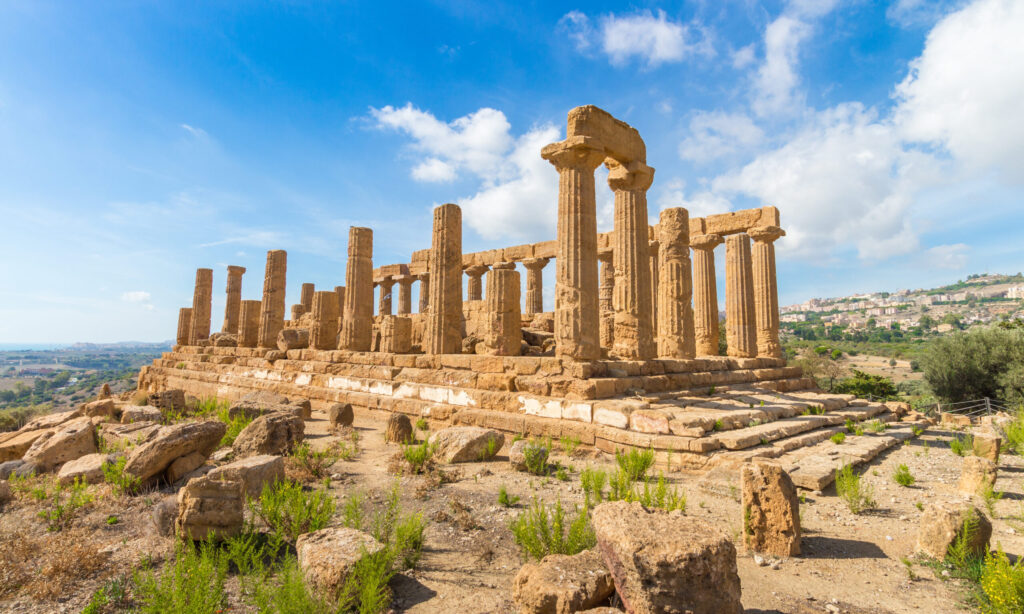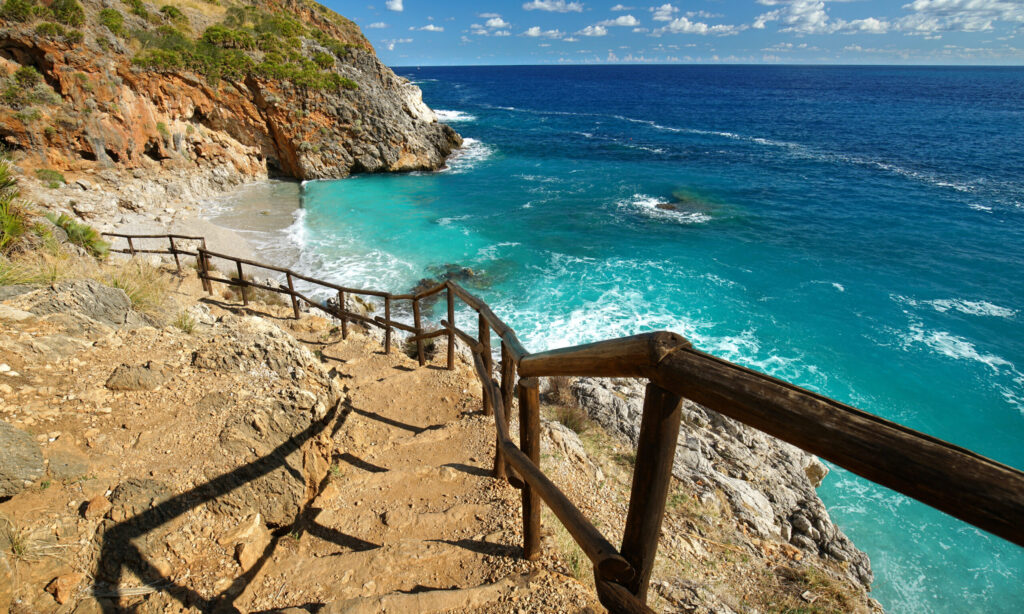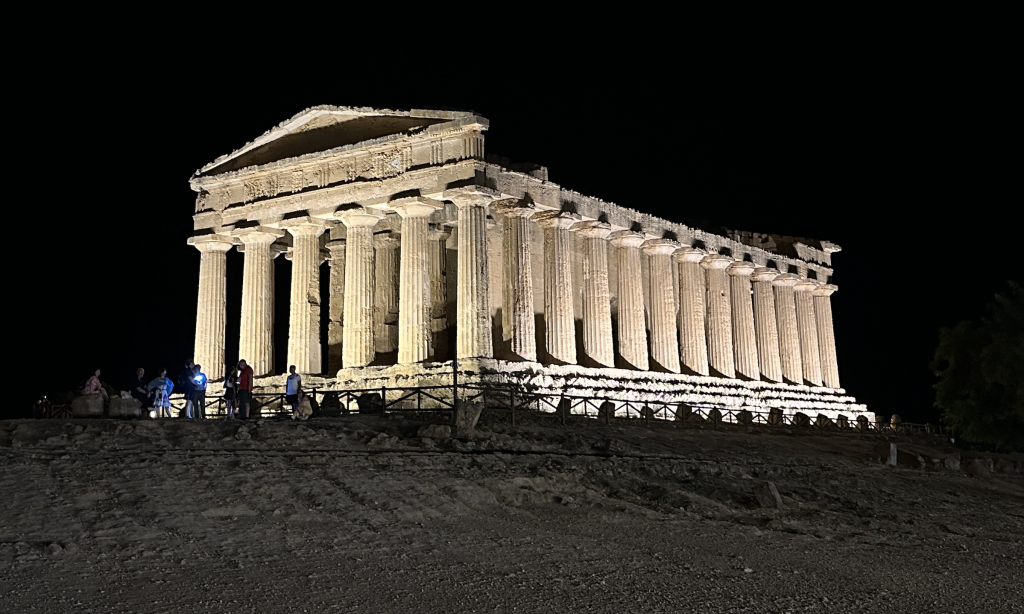THE UNESCO WORLD HERITAGES
OF SICILY
The UNESCO World Heritage sites of Sicily, including the Valley of the Temples, the mosaics of the Villa Romana del Casale and the Aeolian Islands, bear witness to the rich history and cultural legacy.
Unesco World Heritages in Sicily
The beautiful Mediterranean island hosts eight UNESCO World Heritage Sites and Nature Heritages:
- The active volcano Etna
- Lipari Islands (Aeolian Islands)
- The archaeological site of Agrigento (“Valley of the temples”)
- Baroque cities of the Val di Noto
- Villa Romana del Casale
- Necropolis of Pantalica
- The city of Syracuse
- The Arab-Norman capital
- Palermo and the cathedrals of Monreale and Cefalù
The mighty volcano Etna
Probably the most well-known UNESCO World Nature Heritage is the volcano Etna, which lies in the eastern part of the island. It is Europe’s largest active volcano and rises up 3,343m. The peak of the giant is covered with snow until the early summer months. It is even one of the most active volcanos in the world: Since the records began, around 140 eruptions occurred.
The paradisiac Aeolian Islands
The Lipari or Aeolian Islands lie offshore the north-eastern coast of Sicily and are a paradise for vacationers. The island group consists of seven islands, which have volcanic origin. They are listed as UNESCO World Nature Heritage since 2000. They belong to a volcanic chain, stretching from the Vesuvius in Naples to the Etna and appeared in three phases. First, the islands Filicudi, Panarea, Salina and parts of Lipari emerged to the surface of the sea. Further parts of these islands emerged in the second phase. Finally, the islands Vulcano and Stromboli appeared, which are active volcanoes.
The Valley of the temples in Agrigento
The archaeological site of Agrigento is listed as UNESCO World Heritage since 1997. The Valle dei Templi lies south the modern city centre of Agrigento. It mainly shows the ruins of the former Greek city Akragas, which was built on a rectangular limestone plateau. In the north west of the plateau, an extended mountain range follows, on which the acropolis was built. Today, the old town of Agrigento lies here. Akragas was established in 582 B.C. and was the second important city of the Greed world, after Syracuse. Along the southern town walls, numerous monumental temples were built, which can be visited today on the archaeological site.
The Via dei Templi divides the areal into an eastern and western part. In the eastern part, you will find the Templi di Giunone, of which around 25 columns are preserved. The Concordia Temple is the one of the best preserved Greek temples world-wide. This is thanks to the Bishop of Agrigento, which converted the temple into a Christian church and built walls around it. Thus, the 34 columns were preserved from the earthquakes, which destroyed the other temples.The Tempio di Ercole, or Herculean Temple, is the oldest of the temples and was already built in 600 B.C.
In the western area of the site, you will find the Tempio dei Dioscuri, which is the most photographed temple and the symbol of Agrigento. The Tempio di Giove Olimpico was the former temple of the Olympic Zeus and was the largest of the temples. The columns once had a height of 21m! Today, only its ruins are left, as it was destroyed by the Carthaginian and earthquakes.
Prestigious Sicilian Baroque of the Val di Noto
The Baroque cities of the Noto Valley are listed as UNESCO World Heritage since 2002. The villages Catania, Noto, Caltagirone, Militello, Scicli, Palazzolo Acreide, Ragusa and Modica belong to the cultural conglomerate. After the destruction through the strong earthquake in 1693, the wealthy cities could afford a reconstruction by the most famous architects of the island. They rebuilt the cities from the golden limestone of the area; in Catania they even used the lavas stone from the Etna. The most beautiful villages are Noto, Ragusa, Modica and Catania.
Noto is a Baroque stage set with numerous prestigious palaces and churches, stretching along the slopes of the Monte Iblei. It is also named the “garden of stone” and every corner of the city is worth seeing! Modica is located between the gorges of the Monte Iblei and stretches 450m up the slopes.
The most Baroque buildings were built in the old town Modica Bassa. The village Catania dazzles with its Baroque monuments made of the lava stones from the eruptions in 1669. The dark stone gives the city a unique character.
The unique floor mosaics in the Villa Romana del Casale
The historic mansion lies near Piazza Armerina and is listed as UNESCO World Heritage since 1997. The Late Roman villa is world-famous for its unique Roman mosaics, which stretch along 3,500m² of the floors and the walls of the building. They tell hundreds of colourful and vibrant stories of mythology and hunting. It was approximately built in 400 A.C. and it is still unclear who was the owner!
The mansion has about 50 rooms, a thermal spring with a swimming pool, an inner courtyard with a fountain, large salons and even a floor heating. The mosaics were covered with mud, due to a landslide in the 12th century. This preserved them until today, as they were only excavated in the 1950s.
The most fascinating pictures are the chariot racing in the Circus Maximus, which shows the race very detailed from the start to the goal. In the corridor or the large hunting shows the complete process of a big-game hunting of lions, tigers and elephants on 60m. The most beautiful mosaic is the Bikini girl picture. It shows nine young girls, working out in bikini-like clothes.
The impressive chamber burials in the necropolis of Pantalica
The necropolis of Pantalica lies amid the wild and fascinating landscapes in the Monti Iblei. Around 5,000 chamber burials are located on the areal of 1,500 x 500m. Due to the grave goods, the first settlements can be dated to the 13th century B.C.! The last burials are from the 8th century B.C.
The Siculs settled in this area in the Bronze Age, but from the wooden houses from their city, nothing is left. But the stone burials survived the times. Pantalica consists of four different necropolises, which extend along several kilometres. The north-eastern burials are from the 13th century B.C. and the holes chiselled into the rocks look like a Swiss cheese. In some of the caves of the Villagio Bizantino San Micidario, whole families were buried. Some of the caves were even used as chapels or inhabited by Christians.
Syracuse – the most important city of the ancient Greek world
The city lies at the south-eastern coast of Sicily. Its historic old town with the UNESCO World Heritage Sites lies in the small island Ortigia, which is connected to the mainland by the bridge Ponte Nuovo. Syracuse once was the mightiest city of the ancient Greek world and home to many famous Greeks, such as Archimedes. Today, the city unites the heritages of the Mediterranean cultures of more than 3,000 years of history in its buildings and monuments.
The cathedral Santa Maria delle Colonne is a unique composition of an Antique temple and a medieval church. It is located at the highest point of Ortigia and was built in 500 B.C., honoured to the goddess Athena. In the 7th century A.C., the reconstruction to a Christian church started; some spaces between the columns were closed with walls, others were destroyed. The strong earthquake from 1693 destroyed the cathedral partially and the façade was renewed in the famous Sicilian Baroque. Thus, a magnificent mixture of the different epochs was formed!
The Arab-Norman buildings in the province Palermo
In 2015, the Arab-Norman buildings in the province Palermo were listed as UNESCO World Heritages. Two prestigious palaces, three churches, bridges and the cathedrals in the island capital Palermo, as well as the villages Cefalù and Monreale are listed. The historical monuments are witnesses of a common life style of Muslims, Jews, Lombards, Byzantines and Frenchmen. The mixture of these cultures formed a unique art style, which is especially obvious in its architecture.
Seven of the buildings are located in Palermo: the King’s Palace with the chapel, the church of the Eremite Giovanni, the Chieasa Santa Maria dell’Ammiraglio, the church San Cataldo, the Palazzo della Zisa, the bridge dell’Ammiraglio and the cathedral.
Sicily is a picture-postcard island
Contact us to plan
your event or trip in Italy
Contact us now for a free consultation to plan an extraordinary experience for you and your guests!
